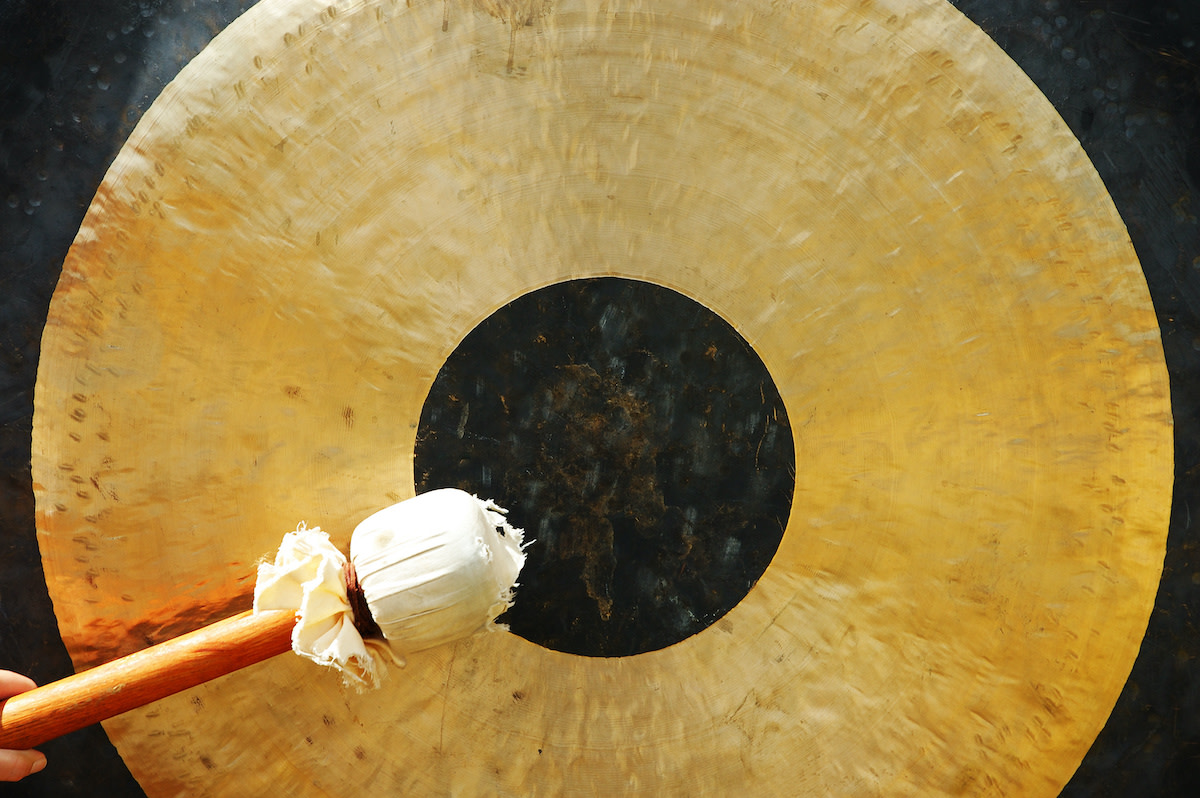Guide to Gongs: 3 Basic Types of Gongs
Written by MasterClass
Last updated: Nov 2, 2021 • 3 min read
The gong is a musical instrument that originated in East Asia and have since found its way to every corner of the globe. Whether you've heard it in classical music, film scores, or traditional Chinese compositions, you probably are already familiar with the sound of a gong.
Learn From the Best
What Is a Gong?
A gong is a percussion instrument formed from a circular metal disc. Gongs are played with mallets, a type of percussion beater with a large, felted head. Gongs are a key instrument in the traditional music of China, Burma, and Indonesia, and they have been a part of Western musical culture since at least the 1700s.
A Brief History of Gongs
Gongs likely originated in the Bronze Age in what is now Tibet. Archeologists have unearthed ancient gongs in present-day China, Indonesia, Burma, and the Annam region of Vietnam. The actual word "gong" is Indonesian, and gongs are common in the gamelan ensembles on the Indonesian islands of Java and Bali. The use of gong instruments remains strong in the cultures of East Asia and Southeast Asia. The instrument prominently features in traditional Chinese, Japanese, Korean, Filipino, Tibetan, Thai, Vietnamese, and Burmese music ensembles.
In the eighteenth century, gongs attracted the attention of European classical composers. François Joseph Gossec was the first composer to include a gong in Western symphonic music. In his 1791 funeral march for the Count of Mirabeau, Gossec included a tam-tam—a suspended gong, also known as a chau gong or Chinese gong. Classical composers such as Hector Berlioz, Richard Wagner, and Peter Ilyich Tchaikovsky likewise incorporated the tam-tam into their compositions and helped introduce it to symphony orchestras. Today, the tam-tam is sometimes referred to as the symphonic gong, and it’s commonly part of the percussion sections of Western orchestras.
How Are Gongs Made?
Gong makers forge gongs from metal discs. Bronze is a common material used to manufacture Javanese, Sundanese, Balinese, Malay, and Chinese gongs. Brass and other copper-based alloys are also common in gong manufacture. Many gongs are forged in factories that produce other metal idiophones, including chimes and tubular bells.
3 Basic Types of Gongs
Gongs fall into three categories, each with its own unique construction.
- 1. Suspended gongs: These flat gongs are circular discs with holes near the top of their outer circumference. A cord runs through these holes and attaches the gong to a frame, where it hangs suspended. The percussionist strikes the gong with a mallet, producing an indefinite pitch (like a cymbal). Examples of suspended gongs include the tam-tam, the Chinese opera gong, the Sheng Kwong gong, the Pasi gong, the wind gong (also known as a feng gong), and the tiger gong. Suspended gongs are the type of gong most commonly used as an orchestral instrument.
- 2. Nipple gongs: Also known as bossed gongs, these gongs feature a raised boss or knob in the middle of the metal disc. Nipple gongs are prominent in kulintang, a traditional Filipino musical genre. They can also be found in Buddhist temples throughout the world, as gong-making remains a sacred part of some Buddhist cultures.
- 3. Bowl gongs: These musical instruments are also known as singing bowls. As their name suggests, these tuned gongs are shaped like small bowls. Bowl gongs sit on cushions and can be either struck or rubbed. Bowl gongs do not produce the traditional un-pitched gong sound associated with suspended gongs and nipple gongs; they instead produce a sound more like bell, but they are nonetheless members of the gong family.
What Is Used to Strike a Gong?
Gong beaters tend to be felted mallets traditionally made from wood with a bulbous felted tip. Percussionists can also strike gongs with drumsticks, but this produces a less resonant sound.
Want to Learn More About Music?
Become a better musician with the MasterClass Annual Membership. Gain access to exclusive video lessons taught by musical masters, including Sheila E., Timbaland, Itzhak Perlman, Herbie Hancock, Tom Morello, and more.
